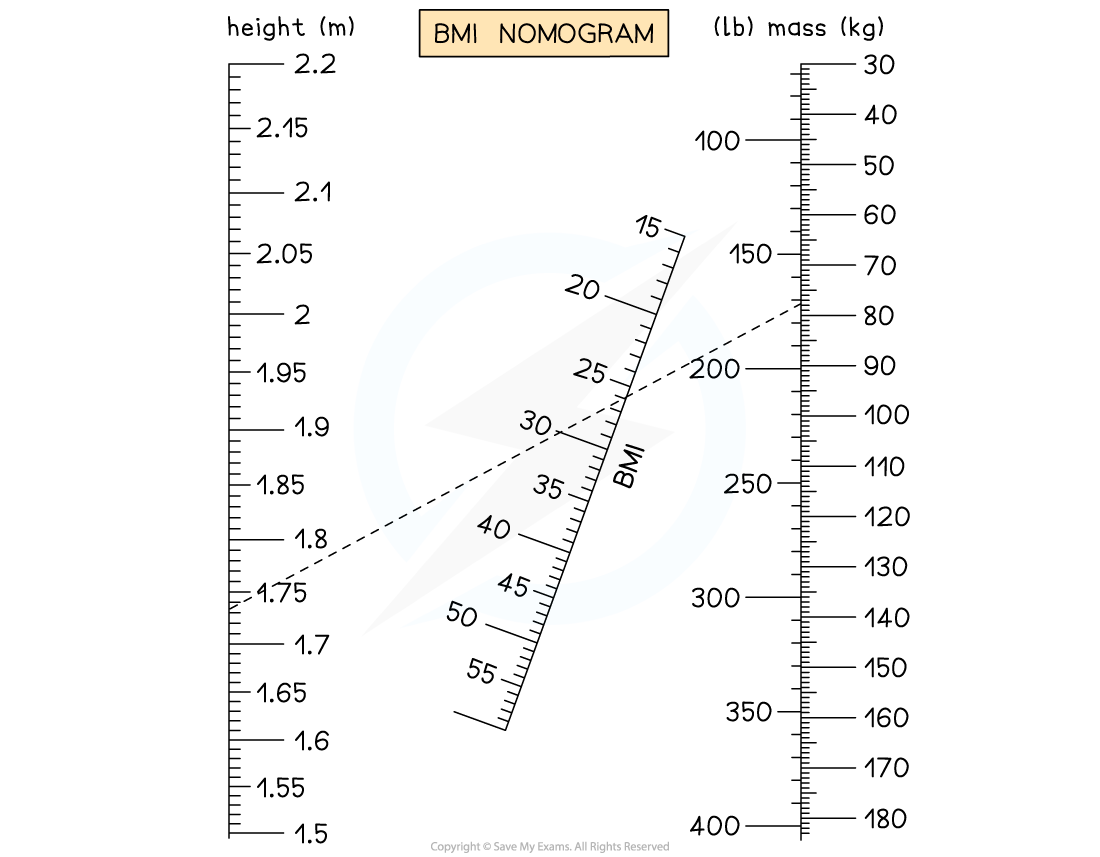Body Mass Index Calculations
- Body Mass Index (BMI) is a rough and ready measure of a person’s mass in relation to their height
- The calculation of BMI is as follows

- A BMI below 18.5 is considered underweight
- A BMI 18.5-24.9 is considered normal
- A BMI of 25.0-29.9 is considered overweight
- A BMI of 30.0-39.9 is considered obese
- A BMI of 40.0 or more is considered morbidly obese
- BMI is a crude measurement as it works against individuals who are heavily muscular but who are also extremely lean; their BMI might be an overestimate
- BMI may also be misleading in the case of elderly people who have lost a lot of muscle mass; their BMI might be an underestimate
Worked Example
Calculate the Body Mass Index (BMI) for an adult male whose mass is 77.3kg and who is 1.73m in height.
Comment on whether his BMI would be regarded as healthy or not.
Step 1: Ensure that mass and height are expressed in the correct units
Mass units are kg - this is correct
Height units are in metres - this is correct
Step 2: Use the formula

 This man's BMI falls just into the 'overweight' category (25.0 - 29.9). It is not possible to judge his health by this measure alone, but if his BMI has been trending upwards over recent time, this might suggest to a doctor that there is an underlying cause of his weight gain.
This man's BMI falls just into the 'overweight' category (25.0 - 29.9). It is not possible to judge his health by this measure alone, but if his BMI has been trending upwards over recent time, this might suggest to a doctor that there is an underlying cause of his weight gain.A nomogram can help to calculate BMI
- A nomogram is a two-dimensional chart that allows rapid estimation of BMI by reading off two scales, one for mass and one for height
- A line is drawn, between the two scales, that intersects a third axis in the middle
- This reveals the BMI
- This removes the need for a calculation and requires no mathematical expertise
- Because the relationships between mass, height and BMI are all fixed, they can be represented on a chart like this
- Nomograms have been largely superseded by rapid online calculators or smartphone apps, but still have a use
- For example, doctors and health workers will often have a BMI nomogram on the wall of their office for rapid reference when consulting a patient

A BMI nomogram. A line can be drawn from the height scale to the mass scale. Where the line intersects the BMI scale is the person’s BMI (26 in this case)
Exam Tip
We commonly discuss a person's size as 'weight', though strictly speaking, we should refer to their 'mass'. In your written answers, use the scientifically correct term wherever possible.
